MAY THE GREAT CREATOR
HAVE MERCY ON US ALL
joseph nyerere sends his condolences
to The Barakas.
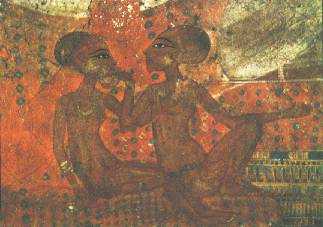
Good names are better than precious jewels.
it is impossible to limit the-many-named.
SHANI/ISIS/MAKEDA/BARAKA
an
amiri/amina/BARAKA
pome.
SHANI is MARVELOUS in Swahili.
Long before Swahili speaking Africans
there were Black Kemetans.
ISIS the many persons
one spirit / one love
ISIS carried words of power
no limit to her attributes
ISIS has the powers
Of water, of earth
ISIS star goddess woman
Queen of the Underworld
ISIS embodied the attributes
Of all goddesses.
ISIS – “The great lady, the God-mother,
lady of Re-a-nefer; Isis-Nebuut, lady of Sekhet; lady
of Besitet; Isis in Per Pakht, the queen of Mesen;
Isis of Ta-at-nehepet; Isis, dweller in Netru; Isis,
lady of Hebet; isis in P-she-Hert; Isis lady of Kebt;
Usert-Isis, giver of life, lady of Afaton, lady of
Philae, lady of the countries of the south, Usert,
Aat, Menkhet, God-Mother, Hert; and Hent, Queen, and
Ament, Menhet, renpet, Sept (Sirius, Hetet, Hurt,
Thenenet, Ant, Sesheta, Heqet, Uatchit, Mersekhen,
Renpet, Neb-tept, That, or Tchetut, and Shetat.”
ISIS had hundred titles; “the divine one, the
only one, the greatest of the gods and goddesses, the
queen of all gods, the female Ra, the female Horus,
the eye of Ra, the crown of Ra-Heru, Sept, opener of
the year, lady of the New Year, maker of the sunrise,
lady heaven, the light-giver of heaven, lady of the
North wind, queen of the earth, most mighty one,
queen of the South and North, lady of the solid
earth, lady of warmth and fire, benefactress of the
Tuat, she who is greatly feared in the Tuat, the
God-mother, the God-mother of Heru-ka-nekht, the
mothr of the Horus of gold, the lady of life, lady of
green crops, the green goddess (Uatchet), lady of
bread, lady of beer, lady of abundance, lady of
joy and gladness, lady of love, the maker of kings,
lady of the Great House, lady of the House of fire,
the beautiful goddess, the lady of words of power,
lady of the shuttle,daughter of Seb, daughter of
Neb-er-tcher, the child of Nut, wife of Ra, wife of
the lord of the abyss, wife of the lord of the
Inundation, the creatrix of the Nile flood.”
MAKEDA: The Ethiopian Orthodox Tewahido Church
“accepts as factual” the legend written in
Kibre Negest (Glory of Kings that MAKEDA, QUEEN OF
SHEBA, forms the origins of The Solomonic Dynasty,
The Imperial House of Ethiopia.
MAKEDA had a son Dawit (David) who studied in Israel
and returned to Ethiopia to begat Bete Israel
(Falasha Jews) in Ethiopia. King Solomon also
arranged for a replica of the Ark of the Covenant to
be made to be taken back with Dawit so as to spread
the worship of monotheism in Ethiopia.
BARAKA:
means Amina and Amiri.
MAY THE GREAT CREATOR HAVE MERCY ON US ALL
joseph nyerere
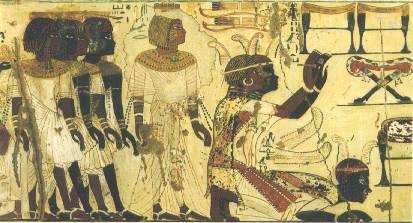
NOTE: information taken from many sources,
including the internet. Please read
Mdw Ntr, Devine Speech, A Historiographical
Reflection of African Deep Thought From The Time Of
Pharaohs To The Present. By Jacob H.
Carruthers, Ph.D, founding member of the Association
for the Study of Classical African Civilizations
(ASCAC) and Director of the
Kemetic Institute
.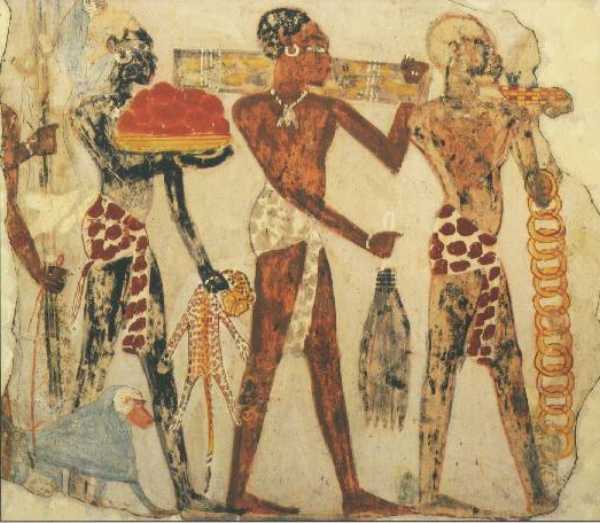
Post-Classic Kemet
2nd Intermediate Period and
Empire
(18th - 11th c. B.C.)
The 2nd Intermediate period is
marked by the emergence of vital regional
cultures and local dynasties, including Hyksos,
Lybian, and Nubian rulers.
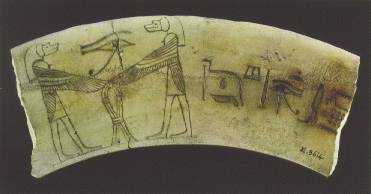
Ivory fragments with scenes probably associated
with a cult, probably 1680-1580 B.C. (Paris:
Louvre).
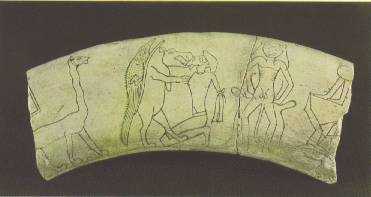
The Empire of Kemet
Under Kings Khamose and Ahmose of Thebes, Kemet
began to construct an empire at the expense of
the Hyksos Dynasty to the North and the Kingdom
of Kerma to the South. The expansion South was
continued by Ahmose' son Amenhotep I, who
established a military settlement at Buhen, just
below the Second Cataract, as a base of
operations to push toward the city of Kerma above
the Third Cataract. Turi had started as a scribe,
but was appointed the commander of the fortress
at Buhen. Because of Nubia's linguistic, cultural
and ethnic affinity, Kemet simply extended its
administration to the South under a viceroy with
the title, "The King's Son of Kush."
One of the first these viceroys was Turi, who was
promoted from his post at Buhen by Amenhotep I.
The viceroy carried out construction work, led
military operations, and ensured the shipment of
valuable goods from Nubia and the South. Under
the viceroy were deputies for the North (Wawat)
and the South (Kush). Local communities were left
in the hands of local
chiefs.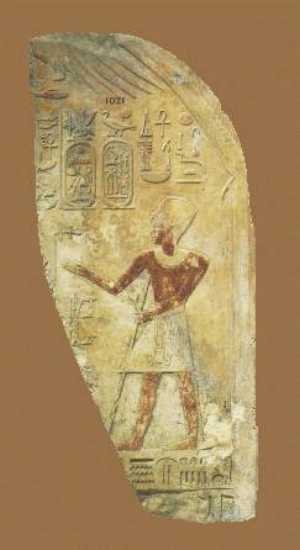
In second half of the 18th dynasty, because of
the shift south of the military frontier, the
fortresses of Lower Nubia gave way to towns and
temples, and new settlements emerged such as
Amara West and Sesebi. These walled towns were
temple-centered and the locale of administration,
mining, or military personnel.
Mural(Ist illustration top page)from Tell
el-Amarna, Kemet, showing the two daughters of
Akh-en-Aten (Amenhotep's new throne name) and
Nefertiti. Akh-en-Aten moved from the capitol,
Thebes, to new holy city, el-Amarna, dedicated to
the worshop of Aten. This radical religious
change was accompanied by a change in aethetics,
perhaps related to Cretan influences carried by
refugees from Crete. These paintings of
Akhenaten's young daughters illustrate that new
style. However, Akhenaten's vision lasted only
about fifteen years before power was restored to
Thebes, and with it the traditional culture of
Kemet.
Kemet sought to Egypitanize local leadership to
discourage rebellion based on ethnic identity.
The fortresses established in the early 18th
Dynasty, give way to temples and urban centers of
mining, administration and commerce. In Lower
Nubia there were a number of such Egyptianized
chiefs, who adopted Kemet names and burial
customs. The result of this was the submergence
of C-Group culture under that of Kemet in Lower
Nubia. In other parts of Nubia, traditional
culture tended to survive
On theTomb of King Tut'ankhamun. The exterior of
shrine shows two representations of the king and
queen. Kemet, as part of African culture in
general, tended to give women unusual status and
importance. The two representations of the king
and queen there, for example, show the queen
having a far more important presence than we
would expect in the art of Western Asia, for
example.
In about 1305, the 18th dynasty gave way to the
19th, which lasted from about 1305 to 1186 B.C.
Temple of Ra'messe II (1289-1224 B.C.) at
Abu Simbel. In the mid 14th c. Kemet was driven
back from its position in Palestine and southern
Syria by the expanding Hittite Empire of
Anatolia, until Ra'messe recovered Palestine. In
the south, below the 2nd cataract, Ra'messe built
a temple at Abu Simbel, carved out of a cliff.
Here he sits, with his family below. The damage
to the one statue was caused by an earthquake
that occurred shortly after the temple was built.
Ramesse built the temples of Gerf
Husein and Wadi es-Sebua.
At Ostraca from Deir el-Medina,
there was asettlement of craftsmen west of the
Valley of the Kings, ca. 12th c. B.C. (Cambridge:
Fitzwilliam Museum). As members of Kemet's
political community, such workers enjoyed a
relatively high status and standard of living.
The status of the official political culture for
the scribe was that of one who enjoyed higher
status than an artist.
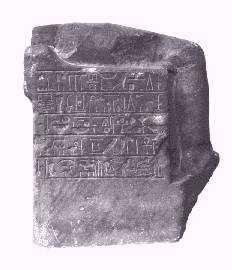
|
|







